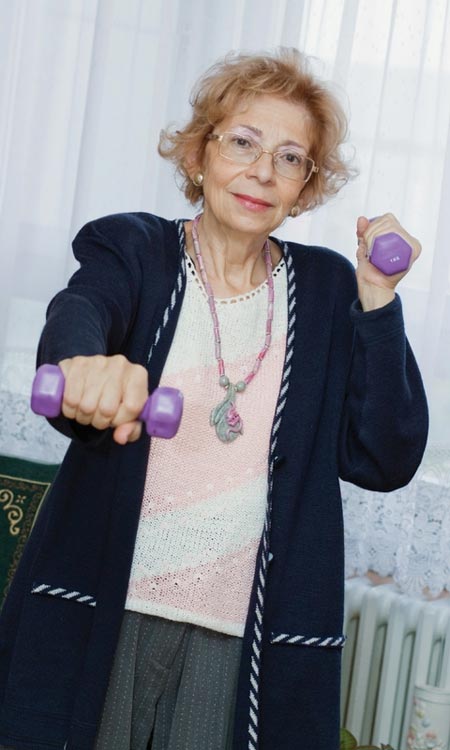Boomers Beset with Disabilities

The number of middle-aged Americans with certain mobility-related disabilities, such as trouble climbing stairs, is on the rise, according to a new study.
This upward trend for baby boomers contrasts with a decline in disabilities found for people 65 and over.
The study is based on data from the National Health Interview Survey, conducted annually from 1997 to 2007 and including up to 15,000 individuals each year. The results show that more than 40 percent of people aged 50 to 64 reported having problems with at least one of nine physical functions, and many reported difficulty with more than one.
While the total number of adults reporting physical problems in this age group did not change significantly over the study period, there was a significant uptick in people reporting difficulties with specific mobility related functions, including walking a quarter-mile and climbing 10 steps.
There was also an increase in the number of people using special equipment to get around, such as a cane or wheelchair. In addition, more people reported needing help with daily personal care activities, such as getting out of bed and moving around the home.
"Although the overall rate of needing help with personal care among this group remains very low — less than 2 percent — this rise in disability is reason for concern," said study author Linda Martin, of RAND Corporation, a nonprofit research organization. "It does not bode well for future trends for the 65 and older population, plus there are substantial personal and societal costs of caring for people of any age who need help."
Here's the breakdown of the number of adults per 10,000, ages 50 to 64, who reported difficulty with various actions in the 2005-2007period and from 1997-1999 (in parentheses).
Sign up for the Live Science daily newsletter now
Get the world’s most fascinating discoveries delivered straight to your inbox.
- Stooping, bending, kneeling: 3,129 (2,875)
- Standing two hours: 2,491 (2,321)
- Pushing or pulling large object: 2,010 (2,024)
- Walking a quarter-mile: 2,146 (1,954)
- Climbing 10 steps: 1,749 (1,537)
- Sitting two hours: 1,491 (1,445)
- Lifting and carrying 10 pounds: 1,410 (1,387)
- Reaching over head: 1,186 (1,149)
- Grasping small objects: 1,128 (1,109)
However, the exact cause of the rise remains unclear, the researchers say.
The reported increases in conditions causing disability could reflect real deterioration of health or improved awareness of conditions as a result of diagnosis and treatment. It also could be that improved medical care has extended the lives of people whose disabilities began early in life and who might have not survived to age 50 in earlier decades.
Despite the growing obesity problem in the United States, those needing help did not cite obesity as an important cause of their limitations.
The study also found increasing proportions of middle-aged adults attributed their need for help to back or neck problems, diabetes, and depression, anxiety or emotional problems. By 2005-2007, the most common causes for needing help were these ailments plus arthritis or rheumatism. People who reported these conditions as causes were most likely to report that the ailments started at ages 30 to 49.
"This a disappointing trend with potentially far-reaching and long-term negative consequences," said Richard Suzman, director of the Division of Behavioral and Social Research at the National Institute on Aging, which funded the study. "If people have such difficulties in middle age, how can we expect that this age group — today's baby boomers — will be able to take care of itself with advancing age? If it continues, this trend could have a significant effect on the need for long-term care in the future."
The researchers note that the study was based on people's self-reports, which could affect the results. The study was published in the April issue of the journal Health Affairs.
- 10 Ways to Keep Your Mind Sharp
- 7 Ways the Mind and Body Change With Age
- How to Grow Old Gracefully










